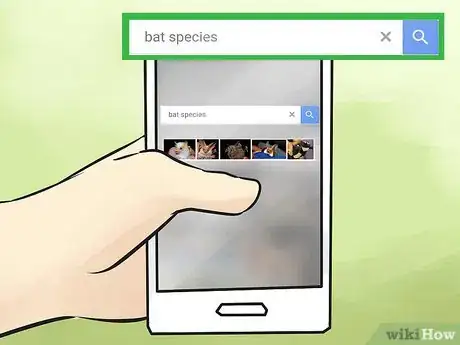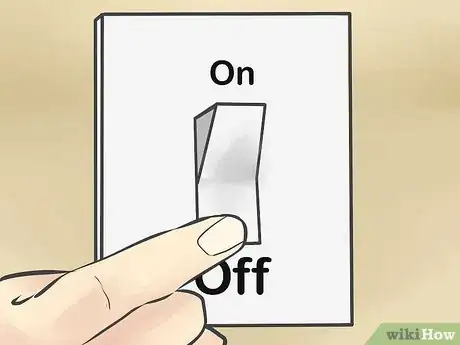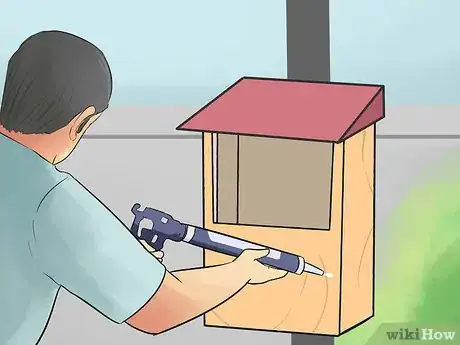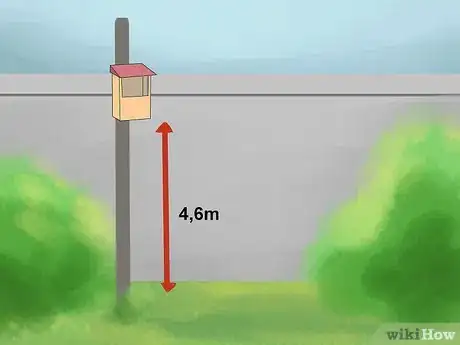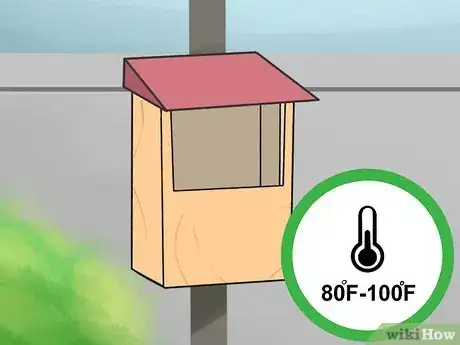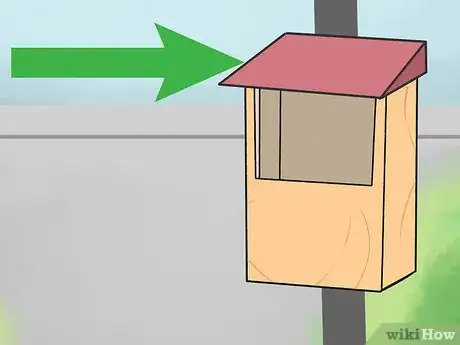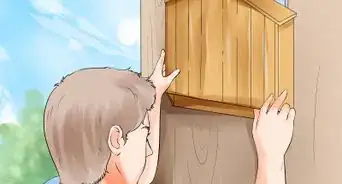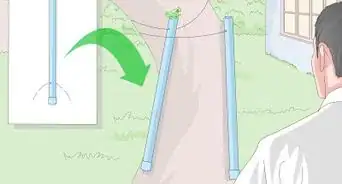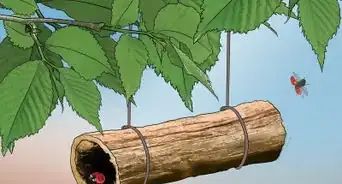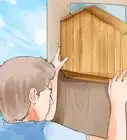This article was co-authored by Lauren Kurtz. Lauren Kurtz is a Naturalist and Horticultural Specialist. Lauren has worked for Aurora, Colorado managing the Water-Wise Garden at Aurora Municipal Center for the Water Conservation Department. She earned a BA in Environmental and Sustainability Studies from Western Michigan University in 2014.
wikiHow marks an article as reader-approved once it receives enough positive feedback. In this case, 89% of readers who voted found the article helpful, earning it our reader-approved status.
This article has been viewed 121,741 times.
While bats have a bad reputation as creepy critters in popular media, bats can be incredibly helpful for maintaining a healthy garden. Not only are bats great for repelling mosquitos and other pesky insects, but bat guano, or bat poop, is a great natural fertilizer. If you want to lure bats to your garden, consider installing a bat house near your garden, and plant plenty of fragrant flowers and herbs in order to attract the kinds of bugs that bats love to feast on.
Steps
Creating a Bat-Friendly Garden
-
1Determine which species of bats live in your local region. Different types of bats vary in their preferences for food and water, so you'll want to get a sense of the bats in your local region before altering your garden. Do some research online or contact Bat Conservation International for more information on bat populations near you.
-
2Install a bat-friendly water source. Bats tend to be attracted to steady sources of water, so if there isn’t a natural water source near your garden, consider adding a water source. Bird baths or small fountains are great options that will draw bats to your garden space.Advertisement
-
3Provide a food source specific to the kinds of bats in your area. Some bats eat insects, while others eat fruit and drink nectar. Find out what kind of food the bats in your region enjoy, then plant fruit trees, flowers, or herbs that will attract those types of bats.
- For instance, plant night-blooming flowers like french marigold and evening primrose, and aromatic plants like thyme and honeysuckle, in order to attract insects for carnivorous bats.[1]
-
4Keep your pets indoors at night. Bats tend to be frightened off by the presence of outdoor cats or dogs. If you want to attract bat visitors, keep your furry friends inside once it starts getting dark in the evening.[2]
-
5Turn off outdoor lights. Because bats are nocturnal creatures, they tend to avoid roosting in areas that are illuminated by artificial light sources. If you must use outdoor lights, consider reducing their brightness and moving them away from your garden.[3]
Installing a Bat House
-
1Buy or build a bat house. Bat houses will provide the right shelter for bats to roost during their nightly feasts. If you’re building a bat house, be sure to use rough, non-toxic wood, such as plywood or cedar, so that the bats will have an easier time climbing in and out of the box.[4]
- You can buy bat houses online or in home and garden supply stores.
- Bat houses should be at least 2 feet (61 cm) tall, 1 foot (30 cm) wide, and 3 inches (7.6 cm) deep.
- Some areas have conservation rules that determine how big a bat box should be, where you can place it, and who can check/clean it. Check with your local conservation society or review your local laws to be sure yours complies.[5]
- You'll likely need to take additional steps to attract bats to a bat house after setting it up. For instance, it needs to be easily accessible, near a water source, and away from artificial light.
-
2
-
3Place your bat home in a sunny location. Bats survive best in warm environments, ideally between 80 °F (27 °C) and 100 °F (38 °C). Find an area near your garden where your bat home will get at least 6-8 hours of direct sunlight.[7]
-
4Install your bat home on a south-facing, 15 ft (4.6 m) pole. Do not mount your bat home on a tree, as predators will have an easier time disturbing both the home and the bats. Placing your bat home on a pole will keep your bat visitors safe from potential harm. In addition, it's best to mount your bat home facing south to ensure that it gets the most direct sunlight during the day.
-
5Use a dowel rod to clean your bat box. Get in the habit of cleaning debris from your bat box during the winter or early spring months, when bats aren't present. Dowel rods are perfect for reaching into high-lofted bat boxes, and you can find this tool at craft stores.
-
6Inspect your bat home for signs of wear and tear. After you mount your bat home, you’ll want to check up on it periodically to make sure it’s in good condition. Clear out any wasp or bees nests, and check to make sure that the house is still well-insulated and firmly secured on its mounting pole.
- Look for bat droppings near your bat home and around your garden for signs that your bat home is working!
Community Q&A
-
QuestionWhere can I get a bat box?
 Community AnswerFeed stores, hardware stores, animal supplies stores and online are all possible places.
Community AnswerFeed stores, hardware stores, animal supplies stores and online are all possible places. -
QuestionWhy shouldn't you place your bat box on a tree if it is supposed to be 15 feet above the ground?
 Community AnswerMost likely because it would be easy for rats, squirrels and snakes to access the bats.
Community AnswerMost likely because it would be easy for rats, squirrels and snakes to access the bats. -
QuestionHow can I successfully relocate a colony of bats?
 Community AnswerHire a professional who can take them to a cave or other environment away from your home. I would not recommend trying to do this yourself.
Community AnswerHire a professional who can take them to a cave or other environment away from your home. I would not recommend trying to do this yourself.
References
- ↑ https://www.mnn.com/your-home/organic-farming-gardening/blogs/how-to-attract-bats
- ↑ http://www.bats.org.uk/pages/encouraging_bats.html
- ↑ http://www.bats.org.uk/pages/bats_and_lighting.html
- ↑ http://www.bhg.com/gardening/pests/insects-diseases-weeds/attract-bats-for-organic-insect-control/
- ↑ https://www.bats.org.uk/our-work/buildings-planning-and-development/bat-boxes/wooden-bat-boxes
- ↑ https://www.gardeningknowhow.com/garden-how-to/beneficial/attracting-bats-to-garden.htm
- ↑ https://www.mnn.com/your-home/organic-farming-gardening/blogs/how-to-attract-bats
